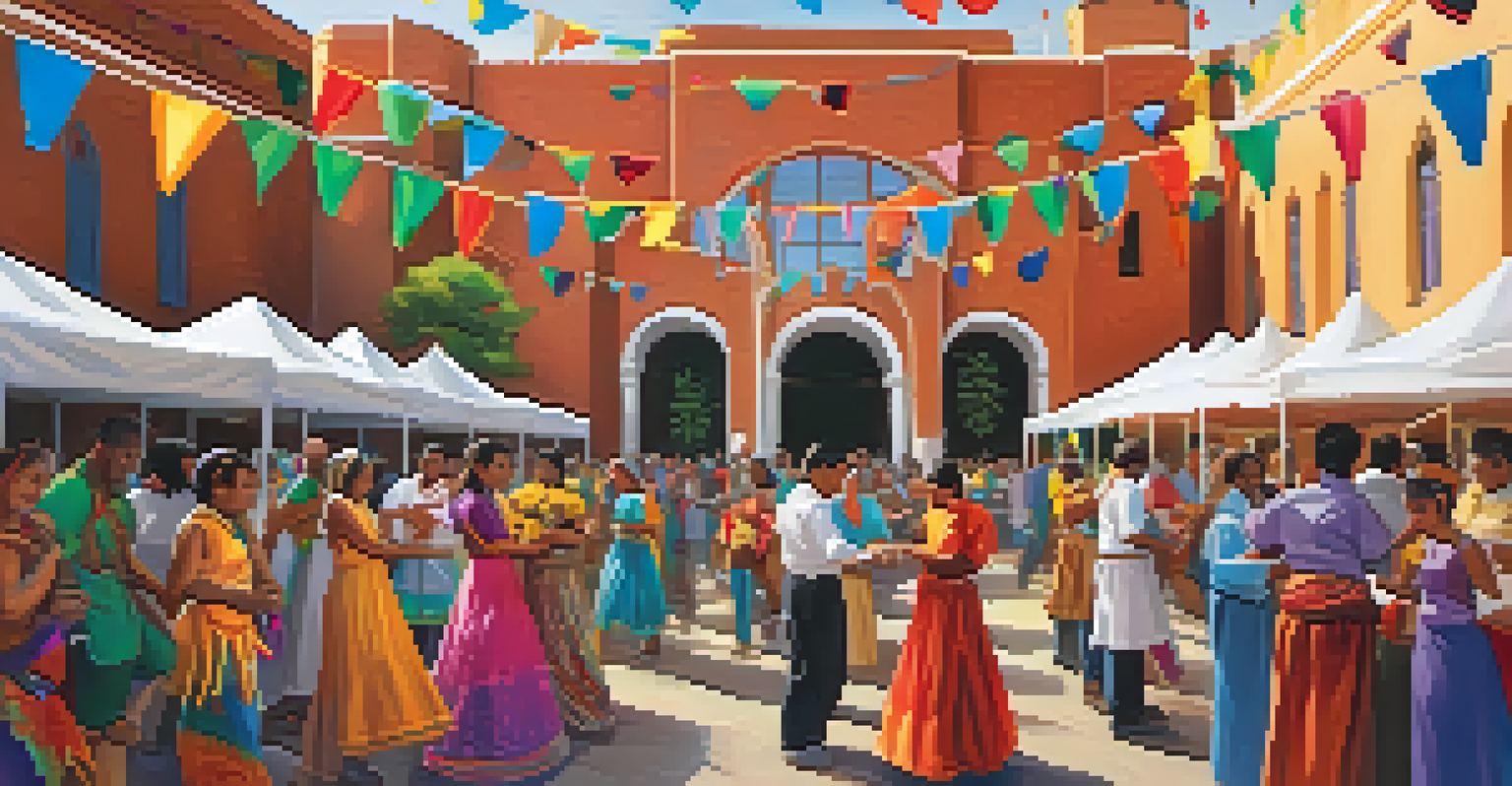The Role of Catholic Missions in Arizona's Religious History

Introduction to Catholic Missions in Arizona
Catholic missions have played a pivotal role in shaping Arizona's religious landscape. Established primarily during the Spanish colonial period, these missions aimed to spread Christianity among Native American populations. This effort was not just about conversion; it also included education and the introduction of European agricultural practices.
The greatest legacy we can leave our children is happy memories.
These missions were often the first points of contact between European settlers and indigenous peoples. They served as centers of community life, offering spiritual guidance and material support. Over time, they became vital in the cultural exchange between different groups in Arizona.
Today, the legacy of these missions can still be felt in the state's diverse religious practices and cultural traditions. Understanding their historical context is essential to appreciate how they influenced Arizona's development and its communities.
The First Missions: A Historical Overview
The first Catholic mission in Arizona, Mission San Xavier del Bac, was established in 1700. Located near Tucson, this mission became a significant spiritual hub for the Tohono O'odham people. Its stunning architecture, still standing today, reflects the deep cultural and historical roots of the area.

These early missions were often built in remote areas, serving as beacons of faith and community for indigenous populations. Missionaries like Father Eusebio Kino played a crucial role in these efforts, traveling extensively to establish missions across the region. His work laid the groundwork for future religious and cultural interactions.
Historical Significance of Missions
Catholic missions were pivotal in shaping Arizona's religious and cultural landscape, serving as centers of community life and education.
As these missions expanded, they faced various challenges, including conflicts with other settlers and changing political landscapes. Despite these obstacles, they continued to serve as essential sites for worship and community gatherings.
Key Figures in Arizona's Mission History
Several influential figures emerged during the mission era, most notably Father Eusebio Kino. He is credited with founding numerous missions and advocating for the rights of Native Americans. His dedication to both faith and community welfare left a lasting impact on Arizona's religious history.
To be a part of a community is to be connected to a history that transcends us.
Another important figure was Father Francisco Garcés, who played a vital role in exploring and documenting the region. His contributions helped map out the mission system and promote further evangelization efforts. These missionaries were often more than just spiritual leaders; they were educators and advocates for indigenous rights.
The stories of these missionaries reflect the complexities of their missions, showcasing both the commitment to faith and the cultural tensions that arose. Their legacies are woven into the fabric of Arizona’s history, influencing generations to come.
The Cultural Impact of Catholic Missions
Catholic missions significantly influenced the cultural landscape of Arizona. They introduced European customs, art, and architecture, which blended with indigenous traditions to create a unique cultural tapestry. This fusion is evident in various aspects of Arizona’s heritage, from festivals to culinary practices.
Moreover, the missions served as educational institutions, teaching reading, writing, and agriculture to local populations. This exchange of knowledge helped shape the social fabric of the region, fostering a sense of community. The skills learned at these missions were vital for survival and adaptation in a changing world.
Cultural Fusion and Syncretism
The interaction between Catholic and indigenous practices led to a unique blend of beliefs, enriching Arizona's spiritual identity.
Today, this rich cultural heritage is celebrated through various events and historical preservation efforts. Understanding this impact helps us appreciate the diverse influences that have shaped Arizona’s identity over the centuries.
Religious Syncretism in Arizona
The interaction between Catholic missions and indigenous religions led to a fascinating blend known as religious syncretism. Many Native Americans incorporated elements of Catholicism into their spiritual practices, creating a unique fusion of beliefs. This blending reflects the adaptability and resilience of indigenous cultures in the face of change.
For example, traditional ceremonies were often infused with Christian symbols and teachings, creating new forms of worship. This syncretism can be seen in various rituals, where elements of both faiths coexist harmoniously. It highlights how cultural exchange can lead to enriched spiritual experiences.
Today, this syncretic nature remains a vital part of Arizona's religious identity, showcasing the coexistence of diverse beliefs. Understanding this aspect of religious history is crucial for appreciating the complexities of Arizona's cultural landscape.
Modern-Day Missions and Their Relevance
While the early Catholic missions established a foundation, modern-day missions continue to play a significant role in Arizona. They adapt to contemporary needs, often focusing on social justice, education, and community support. This evolution reflects a commitment to serving the community while maintaining spiritual outreach.
Many modern missions engage in outreach programs that address pressing social issues, such as poverty and education. They work closely with local communities to provide resources and support, aiming to uplift those in need. This approach demonstrates the enduring relevance of missions in today's society.
Modern Missions' Community Role
Today’s Catholic missions focus on social justice and community support, adapting to contemporary needs while preserving their historical legacy.
Furthermore, these missions often serve as cultural preservation sites, celebrating the rich history of Catholicism in Arizona. They create spaces for dialogue and understanding among diverse groups, fostering unity and cooperation in a multicultural environment.
Conclusion: The Enduring Legacy of Catholic Missions
The legacy of Catholic missions in Arizona is profound, influencing the state's religious, cultural, and social landscapes. Their historical significance extends beyond mere conversion efforts; they represent a complex interplay of faith, culture, and community. Understanding this legacy enriches our appreciation for Arizona's diverse heritage.
As we reflect on this history, it’s essential to recognize the ongoing contributions of modern missions. They continue to address contemporary challenges while honoring the traditions of the past. This blend of old and new illustrates the dynamic nature of faith and community.

In conclusion, the role of Catholic missions in Arizona’s religious history is a testament to the resilience and adaptability of both faith and culture. Their impact is woven into the very fabric of the state, shaping its identity for generations to come.